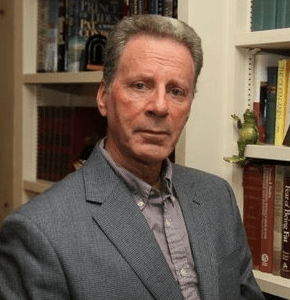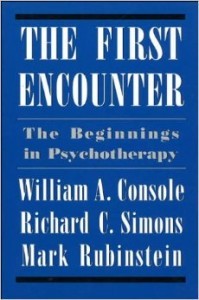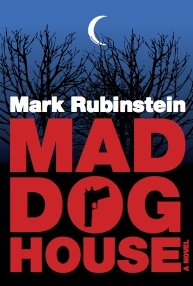I’m pleased to share my second author interview. Last year, I worked with Mark Rubinstein, MD to help him promote his first novel, Mad Dog House, which went on to become a Foreword Book of the Year finalist. Rubinstein’s second thriller, Love Gone Mad, came out this September.  What many readers don’t know is that before he turned to fiction, Rubinstein wrote and co-authored several nonfiction books about medicine. I asked Rubinstein about his experiences co-authoring nonfiction. We also talked about his new novel and what’s next for him as a writer.
What many readers don’t know is that before he turned to fiction, Rubinstein wrote and co-authored several nonfiction books about medicine. I asked Rubinstein about his experiences co-authoring nonfiction. We also talked about his new novel and what’s next for him as a writer.
What’s it like, co-authoring a book? What was your process working with others authors?
Co-authoring a book can be great fun but it’s very demanding. For each non-fiction medical book I co-authored, I worked with a physician from another specialty. I was the writer and psychiatrist and was drawing on the expertise of the co-author whether it was about breast cancer, heart disease, child development or plastic surgery. My contribution was doing the writing and combining the other author’s expertise with the psychiatric aspects pertinent to each book.
My relationship with each co-author was excellent. Each one recognized that I was the writer but depended on the other’s knowledge, training and experience for the information relevant to the medical/physical aspects of the book. It was collaborative in the best sense of the word. 
As for process, we met and discussed the book several times. I then drew up an outline—chapter by chapter—of what would be covered and gave it to the agent. Once a publisher bought the proposal, my co-author and I discussed each chapter in detail and I did the writing. We went over each chapter, made appropriate changes, additions and deletions, and it then went to the editor at the publishing house. Each co-author served as a well of information while I did virtually all the writing. It was truly a joint effort where each of us recognized the knowledge, expertise and talent of the other.
How do you feel about collaboration? Do you still collaborate on projects now?
 I enjoyed collaborating with other physicians when writing non-fiction books. I learned a great deal about each subject, was forced to read about various areas of medicine and child development (breast cancer, heart disease, plastic surgical procedures, many aspects of child development) and will always have fond memories of working with my co-authors. These days, I’m writing fiction and there’s no collaboration as there was for the non-fiction medical books. However, there’s another form of collaboration, especially with my conceptual editor who has been instrumental in my fiction career. She’s gone through each manuscript and made suggestions about plot, pacing, descriptions and about virtually every aspect of each of my novels. She’s vastly improved what I’ve written from a content perspective and I believe every fiction author must have a collaborative relationship with an editor.
I enjoyed collaborating with other physicians when writing non-fiction books. I learned a great deal about each subject, was forced to read about various areas of medicine and child development (breast cancer, heart disease, plastic surgical procedures, many aspects of child development) and will always have fond memories of working with my co-authors. These days, I’m writing fiction and there’s no collaboration as there was for the non-fiction medical books. However, there’s another form of collaboration, especially with my conceptual editor who has been instrumental in my fiction career. She’s gone through each manuscript and made suggestions about plot, pacing, descriptions and about virtually every aspect of each of my novels. She’s vastly improved what I’ve written from a content perspective and I believe every fiction author must have a collaborative relationship with an editor.
How does your earlier work as a nonfiction writer parlay into writing novels? Did any of your writing habits change when you changed genres?
It’s difficult to determine if any of my earlier work as a non-fiction writer informs my fiction. The one thing that still pertains is that writing (whether fiction or non-fiction) is a discipline. I write every day. As for habits changing during the course of going from the non-fiction to the fiction arena, I can only say that in fiction, I’m far freer to use my imagination. I don’t have to adhere to facts or reality. I can go wherever my imagination and fantasies take me (within reason) and that’s an immense pleasure. I think I’m far happier letting my imagination loose than I am adhering to the constraints of medicine and reality. With fiction, I end up “free-associating” and often look for dramatic and effective ways to convey feeling states and bodily sensations that would never be part of the landscape for a non-fiction writer. And of course, there are plot twists and quirks of one or another kind that emerge in fiction. The one aspect of my non-fiction writing that was lots of fun was writing case histories to illustrate various points made in the body of the text. There, I not only changed patients’ names, but made things up to more dramatically illustrate the points being made. I even gave the patients some dialogue just to make it more “real.” So very early on, there was a modicum of fiction even in my non-fiction writing.
What’s the best piece of fiction you’ve read lately? Non-fiction?
Lately, I’ve read some very fine fiction. I’m pretty eclectic in my reading habits. One fine novel I recently read (actually, re-read) was Barry Eisler’s A Clean Kill in Tokyo, which is his re-written first novel featuring John Rain, a professional assassin. Another was Thomas Perry’s The Boyfriend. For non-fiction, I recently read A Circle of Friends.
Your new thriller, Love Gone Mad, is currently available in paperback and for Kindle. What was your favorite part of writing that book? The most difficult?
It’s difficult to pick out a “favorite” part of writing Love Gone Mad. A number of scenes in the novel are very powerful—so much so, that when writing a few of them, I actually ended up standing and pounding away on the keyboard. There’s a graveyard scene (a confrontation) that carried me away as Adrian (the hero) struggles with Conrad in a life-and-death situation. Adrian is faced with the realization that he can change everything in his and Megan’s lives if he takes a certain course of action, and he must solve a moral dilemma. Another is a scene where Megan is trapped in an elevator—another life-threatening situation—while yet another involves Megan in her hotel room under very frightening circumstances. Some reviewers have called those scenes (and the book) “a horror film on paper.” I can’t say that any scene was difficult for me to write. One scene that required me to reach into my psychiatrist’s bag of knowledge was the one where Megan and Adrian first meet in the hospital cafeteria. These are two lonely people with many regrets who encounter each other strictly by chance. I tried to capture each one’s POV (point of view) and each one’s uncertainty and lack of confidence in this situation. Each thinks the other is unattainable and will never be interested, and yet, each yearns for some connection. It wasn’t hard, but it was challenging and most of all, great fun to tap into each character’s mind. 
What’s next for you as a writer?
My next project is Mad Dog Justice. I’d never intended to write a sequel to Mad Dog House but many reviewers who read the novel pointed out there was unfinished business at the end of that book. They wanted a sequel and I decided they were correct. Not only was there unfinished business, but the ending to Mad Dog House was a bit vague (as is life) and there were some loose ends. So I’ve just completed a sequel and have brought Roddy Dolan and Danny Burns back to life. In Mad Dog Justice they will continue struggling with the repercussions of the horrific situation in which they were trapped in Mad Dog House. Publication date is early Spring 2014.
# # #
Thanks, Mark! Mark’s latest novel, Love Gone Mad, is currently available in paperback via Barnes & Noble and Amazon. His eBook ($3.99) is available for Kindle — buy it here. To learn more about Mark Rubinstein and his books, visit:
- Website: Author Mark Rubinstein, Official Website
- Blog: Mark Rubinstein – Blog
- Goodreads: Mark Rubinstein – Goodreads
- Twitter: Mark Rubinstein – Twitter
- Facebook: Mark Rubinstein – Facebook